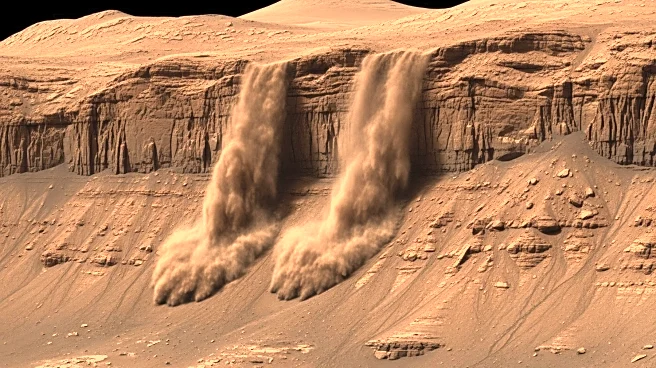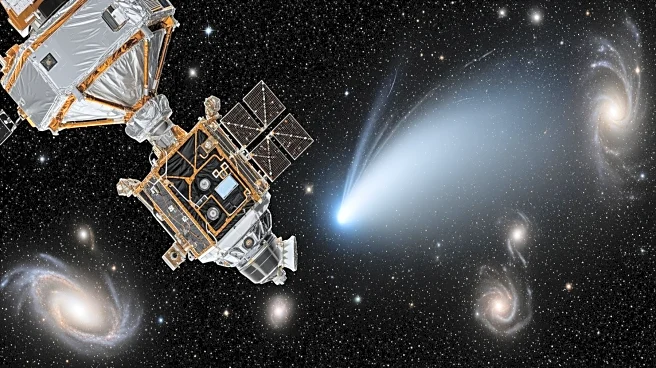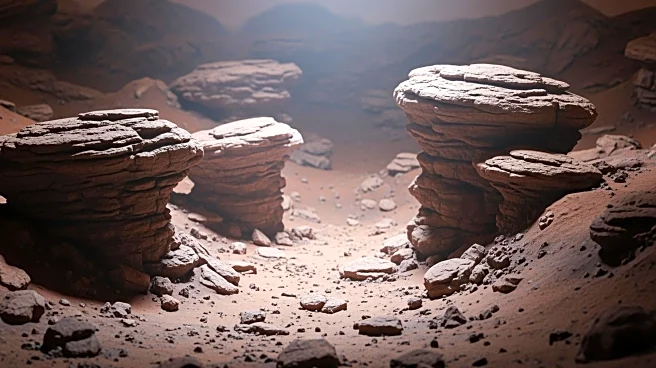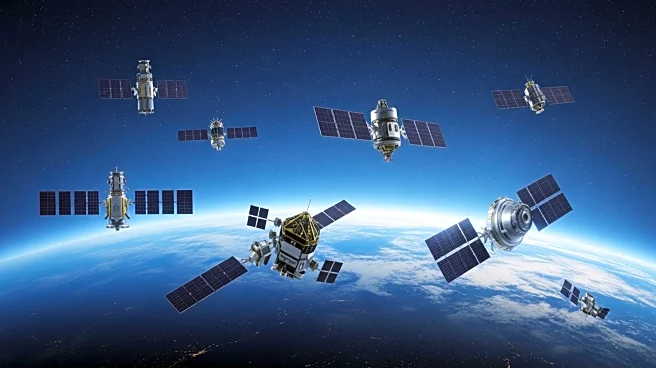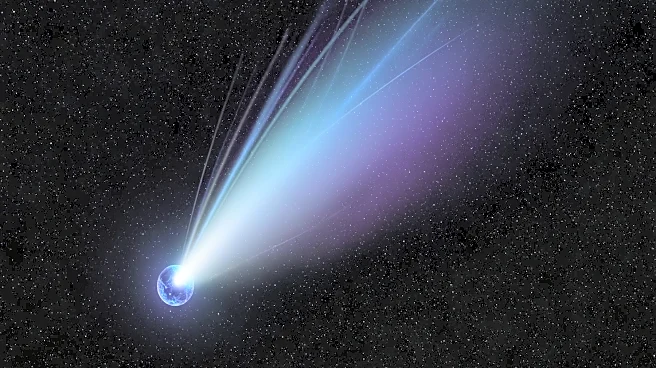What's Happening?
The European Space Agency's ExoMars Trace Gas Orbiter has captured images of dust avalanches on the slopes of Apollinaris Mons on Mars. These images, taken by the Colour and Stereo Surface Imaging System
(CaSSIS), reveal the aftermath of a meteoroid impact that triggered the avalanches. The event, which occurred between 2013 and 2017, resulted in the formation of numerous streaks on the Martian surface. Scientists have determined that these streaks are primarily caused by dry processes such as wind and dust activity, rather than water.
Why It's Important?
The findings from the ExoMars Trace Gas Orbiter provide valuable insights into the dynamic processes shaping the Martian surface. Understanding these processes is essential for reconstructing Mars' geological history and assessing its potential habitability. The study of dust and wind dynamics on Mars can also inform future missions, as these factors significantly impact surface conditions and exploration strategies. Additionally, the research highlights the importance of continuous and global-scale observations in revealing the planet's current and past environmental conditions.
What's Next?
The ExoMars Trace Gas Orbiter will continue its mission to study Mars' atmosphere and surface, focusing on identifying water-rich locations and understanding the planet's ancient past. Future observations will aim to further elucidate the role of dust and wind in shaping Martian landscapes. The data collected will contribute to ongoing efforts to determine whether Mars once supported life and guide the planning of future exploration missions. The scientific community will likely continue to analyze the orbiter's findings to enhance our understanding of Martian geology and climate.


